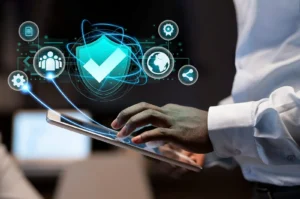We are pleased to welcome you to our collection of publications about medical device connectivity in healthcare. There has never been a time when it was more crucial for medical devices and healthcare systems to communicate effectively and reliably as the globe grows more interconnected. From fundamental ideas to more intricate and technical details, this series seeks to provide readers a thorough understanding of the principles of medical device communication.
To begin, let’s start with some fundamental questions about medical device connectivity:
- What is Medical Device Connectivity in the context of Healthcare?
When medical equipment is connected, it can communicate with other medical devices as well as with healthcare systems. This covers both the transmission of instructions to operate medical devices and data such as patient health records and diagnostic results. Medical device connectivity has grown more crucial as a result of the growth of the Internet of Things (IoT) for enhancing patient outcomes, cutting costs, and raising overall care quality. Connectivity between medical devices can assist to simplify processes, automate jobs, and provide doctors immediate access to vital patient data.
- How does it apply to local LTE?
Local LTE, or private LTE networks, can provide a dedicated and secure communication channel for medical devices within a healthcare facility. Medical device connectivity can be optimized and enhanced by leveraging the capabilities of local LTE networks. These networks can support a range of devices and applications, including patient monitoring, telemedicine, and asset tracking. Local LTE networks can also help to reduce interference from other wireless devices, such as smartphones and tablets, which can interfere with medical device communication.
- What is its mechanism, and why do you require it?
Numerous methods, including wired and wireless connections, Bluetooth, Wi-Fi, and cellular networks, can be used to connect medical devices. The mechanism chosen will be determined by the particular needs of the medical gadget and the hospital. Although they can offer dependable communication and high-speed data transfer, wired connections like USB and Ethernet may restrict mobility. Greater mobility may be possible with wireless connections like Wi-Fi and cellular networks, but there may be security and interference risks. Medical device connectivity is crucial for successful and efficient patient care because it allows for real-time information sharing and collaboration amongst medical equipment. Additionally, it helps to lower mistakes, enhance patient outcomes, and boost the effectiveness of healthcare delivery.
- What are some challenges associated with medical device connectivity?
Medical device communication presents a number of difficulties, including interoperability, security, and regulatory compliance. It may be challenging to ensure seamless communication amongst medical equipment since they may employ different communication protocols from one another. Security is a major issue since medical device communication needs to be safeguarded against unauthorized access, data breaches, and manipulation. Another difficulty is ensuring that healthcare institutions comply with the various standards and laws that regulate the communication of medical devices, such as HIPAA and FDA laws.
- How can healthcare facilities ensure the security of medical device communication?
Healthcare facilities can use encryption, authentication, and access control among other security methods to safeguard medical device communication. Data in transit can be protected by encryption, and only authorized devices can communicate with one another thanks to authentication. Access control can restrict unauthorized users’ access to medical equipment and the data they are connected to. Additionally, healthcare facilities can implement best practices for security, such as using strong passwords and keeping software updated, as well as routine security audits.
- How can healthcare facilities ensure regulatory compliance for medical device communication?
By adhering to accepted standards and rules like HIPAA and FDA regulations, healthcare institutions can guarantee regulatory compliance for medical device communication. This may entail putting rules and processes for data privacy and security into place, performing routine risk assessments, and making sure that medical devices comply with applicable laws. To keep up with new laws and the best ways to communicate with medical devices, healthcare institutions can also interact with regulatory agencies and business associations.
- How can healthcare facilities leverage medical device connectivity to improve patient outcomes?
In numerous ways, medical institutions can improve patient outcomes with the use of medical device connection. Healthcare practitioners can remotely monitor patients, receive real-time alerts, enhance data accuracy, optimize workflows, and use predictive analytics to spot probable adverse events by linking medical devices to the EHR system. Early interventions, greater professional judgment, and ultimately better patient outcomes can result from this.
In conclusion, medical device connectivity is becoming increasingly essential for healthcare institutions as the demand for improved patient outcomes and care quality rises. The use of various communication protocols and mechanisms, including local LTE networks and encryption methods, can help healthcare facilities ensure the security and regulatory compliance of medical device communication. Despite the challenges associated with interoperability and security risks, leveraging medical device connectivity can simplify processes, automate jobs, and provide healthcare practitioners with immediate access to vital patient data. By embracing this technology, healthcare facilities can improve patient outcomes by remotely monitoring patients, optimizing workflows, and enhancing data accuracy, ultimately leading to better patient care and improved healthcare delivery.




